If we look at it optimistically, all of us (kinda) already have a zero-waste wardrobe. This is ’cause we never really throw anything out. We often stick to a few of our favorite pieces of clothing and accessories (like they do with a capsule wardrobe), that we keep wearing and repeating until we get bored and find a new set of favorites. (But then, the old faves just mix with the pile of no-wear items and remain in our wardrobe!)
So, dear readers, this is where you need to give your wardrobes a second glance. And this time, let’s really aim to go zero waste. Here’s a guide to help you set up a zero-waste wardrobe.
1. Sort what you already have to start your zero-waste wardrobe.
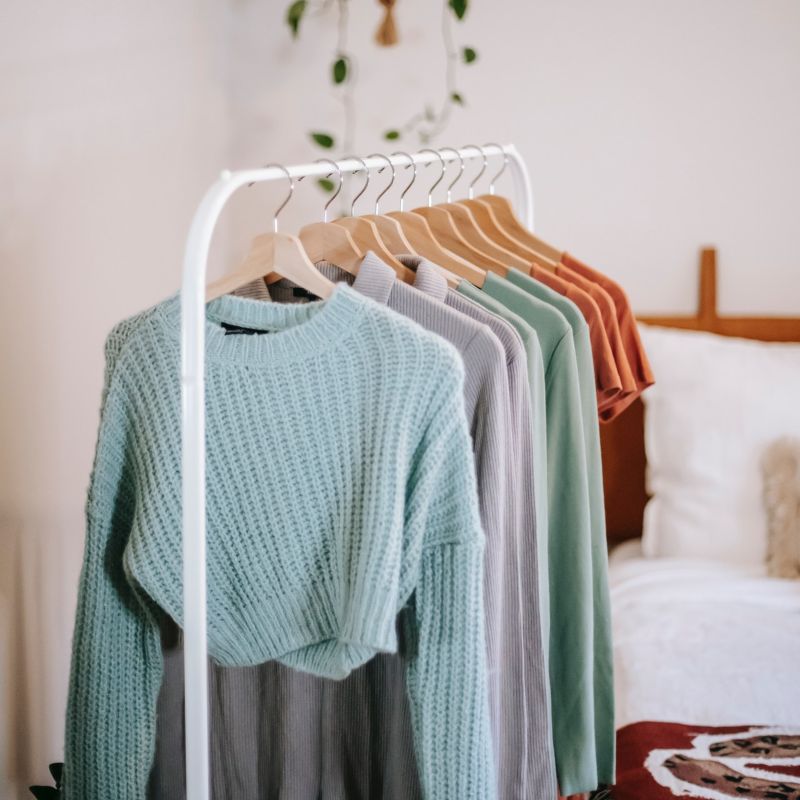
The first step to setting up a zero-waste wardrobe is to sort what you already own. Be it clothing or accessories, take everything out and try it on; see if the items you have in your wardrobe fit or not; decide whether you want them or not. If the items are too loose or tight-fitted, then think about whether they will fit you in the future and if you will actually use them. Ask for a friend’s help if you cannot decide for yourself.
Here are a few questions that will help you sort your old clothes and accessories.
- Does it fit well? If not, will it fit in the future?
- How many times will I wear it again?
- Can I style it with multiple items I already own?
- Is it easy to care for?
- Can it be washed and reused?
- Will it last much longer?
- Can I make do without it?
- Do I already own something similar to this?
Answering these questions honestly can really bring you close to having and maintaining a zero-waste wardrobe for longer. Once you decide on the things you want to keep and the ones you want to give away, sort them into different piles.
2. Declutter and organize before buying new clothing items.

After you sort the clothes you no longer need, it’s time to decide how to get rid of them responsibly. You can do a lot with old clothes. You will find multiple guides online to reuse and recycle old clothes and make them something useful so that they stay out of the landfill. For example, you can repurpose really old clothes into cleaning rags around the house.
You can also turn old accessories into decor for your next zero-waste party. If you have a pile of gently-used clothes, you can either sell them on online marketplaces like eBay and Facebook or to local second-hand or thrift stores. Another good option is to donate or give away your clothes to someone or someplace in need, like an animal shelter or a charity. Although, you must ensure that the clothes you give away are clean and in good and wearable condition.
When we say clothes, we just don’t mean t-shirts, dresses, and denim. It also includes your intimates. Wondering what to do with old underwear and bras? You can actually recycle and repurpose them too. Check Earth 911 to find facilities that accept old intimates for recycling.
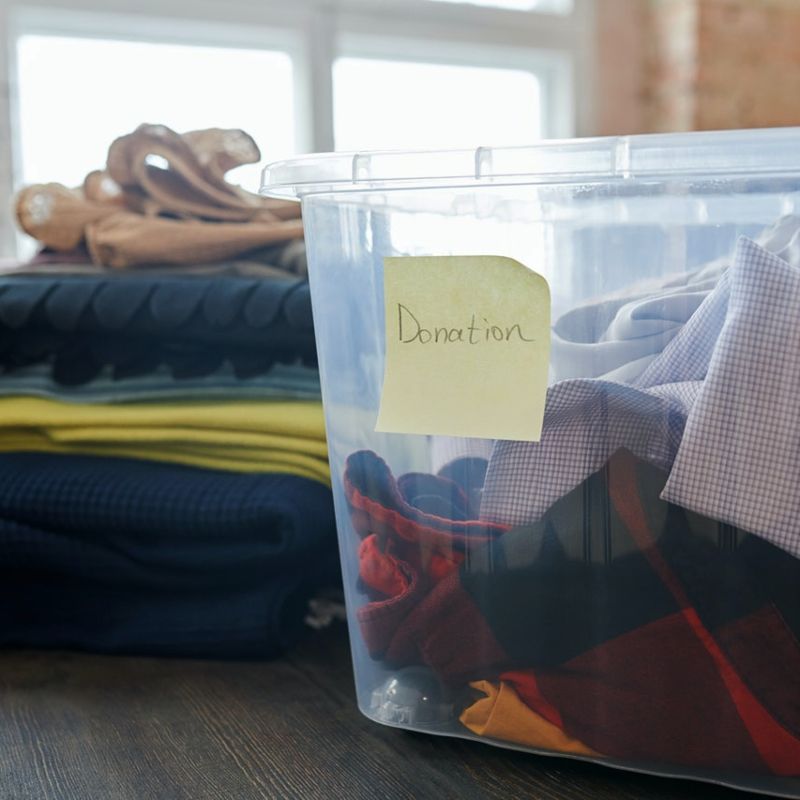
Once you get rid of unwanted clothing, it’s time to decide on what you already have and what you need more of (or not!) Make a note of things you need and at the same time also of the things you buy a lot (or impulsively) to stop it from happening time and time again.
Lastly, if you really want to move towards a more sustainable lifestyle, try out a capsule wardrobe. A capsule wardrobe revolves around the concept of doing more with less. You basically have a fixed number of versatile pieces of clothing and accessories in your wardrobe that you style differently to create multiple looks. It’s a great way to minimize your waste and maintain a zero-waste wardrobe.
Related Articles:
- 5 Ways To Re-Love Your Old Underwear And Bras
- What Exactly Is A Capsule Wardrobe? Here’s How To Create One For Yourself
3. Repair or redesign before buying anything new.
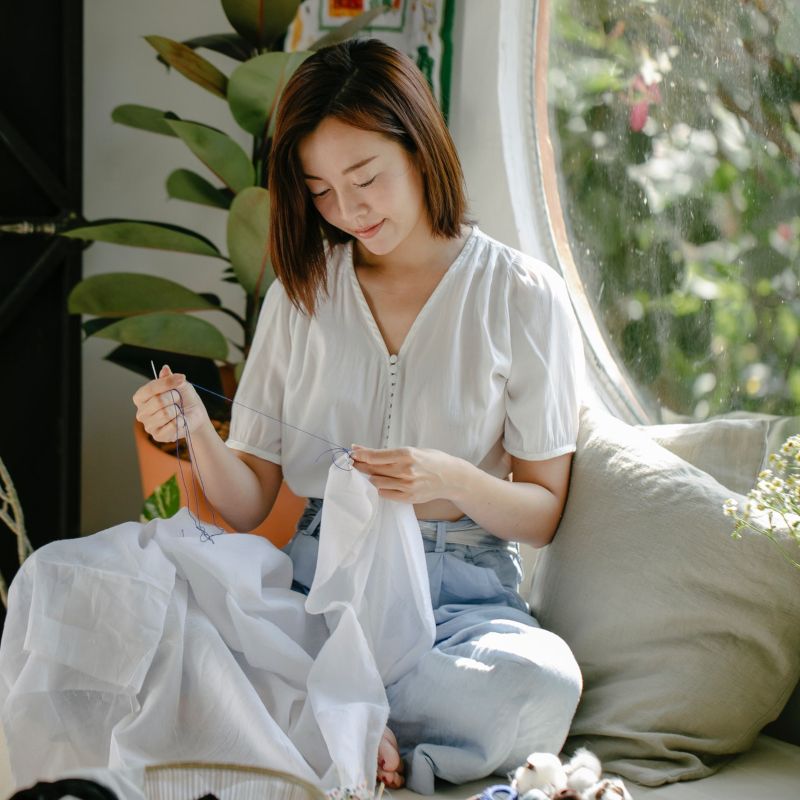
Make the needle and thread your besties while keeping a zero-waste wardrobe. We all have a couple of comfy go-to items in our wardrobe that we stopped wearing, either ’cause it got ripped or had a stain that just wouldn’t disappear. You can try to repair the items by patching the rip or sewing back the broken button.
In case of nasty stains, consider redesigning the outfit in such a way that the stains don’t stand out. For example, if it’s a pair of denim, add embroidery or subtle details to cover the stain. If it’s a T-shirt, you can style it in a way that the stain is no longer visible; or repurpose it by painting on the stain or adding an iron-on sticker, etc. It’s always better to try every option before you buy any new item.
4. Swap and borrow with friends and family.
If you have friends and family who match your clothing size (and style), then it’s a great opportunity to swap and borrow clothes instead of buying new ones. This way, both of you will have something different to wear, and your clothes will get a second life.
5. Explore local markets, secondhand shops, and thrift stores first.
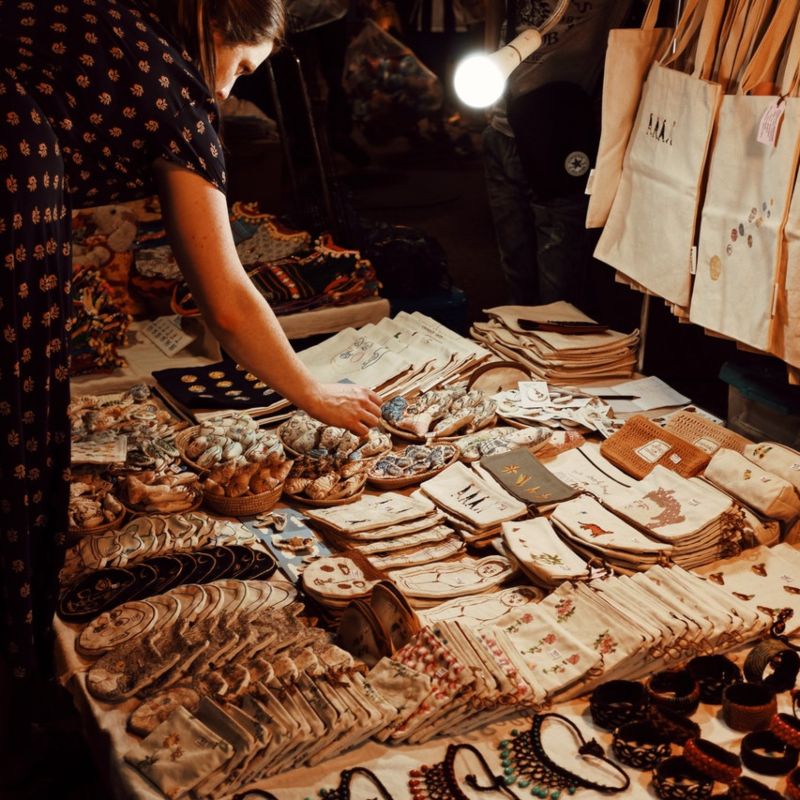
Thanks to the fast fashion industry, we have really become habitual of buying low-quality clothes at cheaper prices. This, in turn, also makes us buy even more, every now and then. So, it is really important to be conscious about our choices when out shopping.
It’s always best to skip big brands when shopping. Instead, shop local. Head out to the local markets and check for local stores, secondhand markets, and thrift shops. You will find a lot of gently-used pieces and hidden gems in these stores that will not only help you up your style game but also help the planet by saving these items from ending up in landfills.
Related Article: Is Thrifting Really Sustainable? A Look Into This Viral Social Media Trend
6. Buy only things you will wear multiple times.
Buy a clothing item only when you are 100% sure. Wishlist and wait for a week before adding it to the cart. Look for items that you can style in multiple ways. Shop for versatile pieces that you know will last longer and not turn boring after a few wears. Ask yourself, before buying any new clothing item, whether or not you will wear it multiple times.
7. Opt for natural fabrics whenever possible.
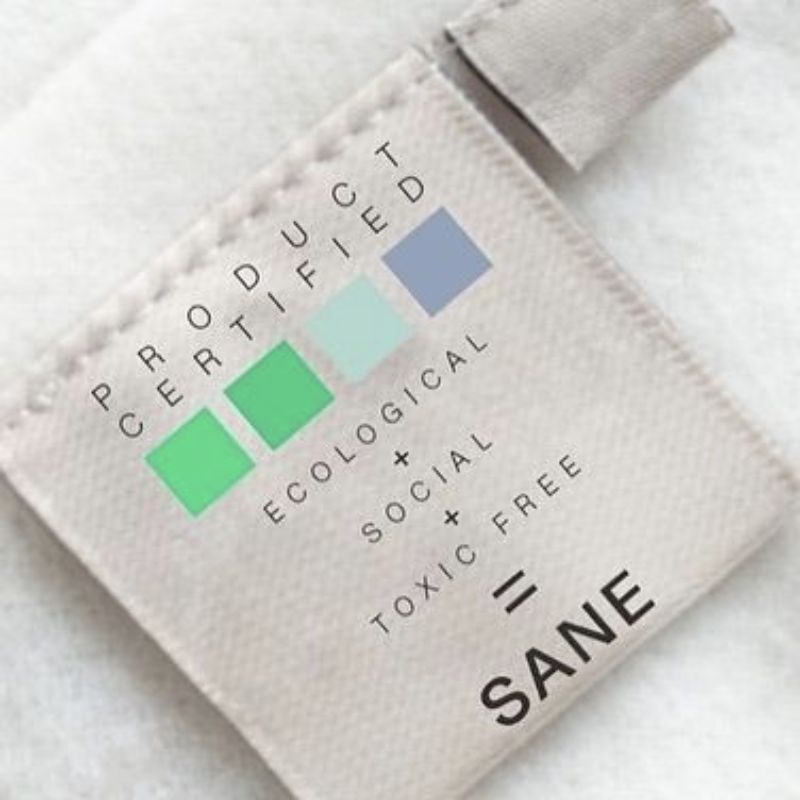
Another thing to keep in mind is to always look for sustainable and natural fabrics first when buying new items. Look for certifications like SANE, Oeko-tex, and B-corp; choose fabrics that are good for you and the planet. These certifications not only make sure that these textiles are safe for you but also are made keeping sustainability in mind. Also, the people who are involved in the process are treated well and compensated fairly for their work.
8. Look for recycled synthetics if natural fabrics are not available.
If you are unable to find sustainable fabrics, look for recycled synthetic fabrics like recycled polyester or recycled nylon. Sometimes it can be impossible to find substitutes for certain essential clothing items like rain covers. You might need to opt for synthetic fibers in such cases. There are many brands like Patagonia that are doing good by making clothing items with recycling synthetic fibers.
9. Don’t be tempted by sales and offers
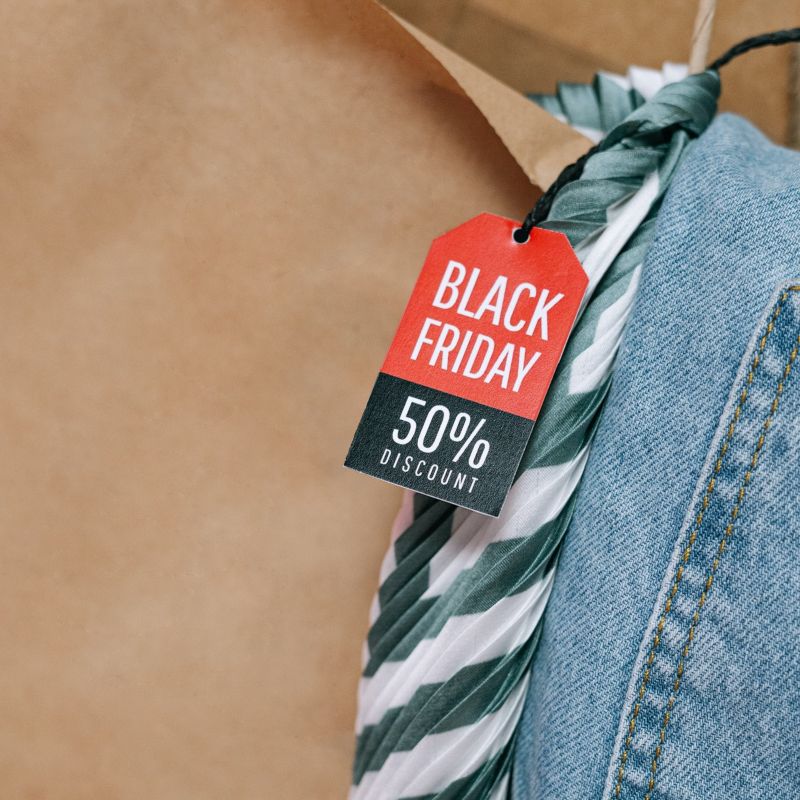
Sales and offers like buy one get one free and slashed prices can be extremely tempting to shop even more. However, it’s a trap! Don’t fall for it; rather, stick to your list no matter what and shop sustainably. These marketing gimmicks make you want to spend more; then, you end up with unwanted clothing items that are unfortunately headed to the landfill, one day or the other. To avoid temptations, declutter your emails, unsubscribe to promotions, and turn off ads on your phone and laptop.
10. Shop offline instead of online or look for low-waste stores.
Lastly, if you are shopping, try to opt for shopping offline instead of going to online shops, as it helps you minimize waste. You can always carry your own bag and skip the plastic or paper bag you get from stores. When you shop online, the shipping adds to the waste with the packaging. And if you happen to get the wrong size or item, then the whole return and exchange will cause more packaging waste.
If you do want to shop online, look for shops that have packaging-free options, or compostable packaging so you can easily compost the waste at home after your order is delivered.
Whether you choose to try out sustainable fabrics, buy second-hand, or go for a capsule wardrobe, here’s hoping that your efforts will put you one step closer to having a truly zero-waste wardrobe. And once you can say that, you won’t have to worry about letting go in the process!











